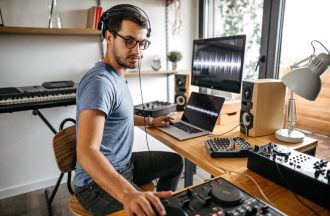
Over 15 million people take part in online trading, and their ranks are growing fast. The COVID-19 pandemic has revealed drawbacks of conventional employment. Financially savvy individuals are turning to alternative ways of earning. The foreign exchange offers viable opportunities.
Key Principles of Exchange
Hefty profits on the foreign exchange require experience, but it is no rocket science. Traders buy and sell currencies, profiting from changes in their values. As every tourist knows, exchange rates are always changing. They may rise or fall due to political or economic events, from domestic to global.
Currencies are bought and sold on an over-the-counter market, which means there is no physical exchange. Buyers connect to sellers through intermediaries known as brokers. These companies provide software for trading, register accounts and process financial flows. Check the guide on https://trade-in.forex/basics-of-buying-and-selling-forex/ for key basics of Forex trading.
Trading in Pairs
All currencies are valued against one another, and pairs are split into major, minor, and exotic. Each follows the general formula ‘base currency’/’quote currency’ (aka ‘counter currency’). For instance, the value of the GBP/USD pair shows how many US dollars one British pound is worth. There are two prices simultaneously: Ask (for the buyer) and Bid (for the seller). The difference is known as ‘spread’, and it constitutes a profit source for some intermediaries.
Traders base their decisions on technical and fundamental analysis of the market. They aim to foresee value changes and capitalize on preemptive actions. For instance, if you expect the British pound to gain value (appreciate), you can buy more lots today. This requires opening a long position. On the other hand, those who anticipate depreciation (decrease), may sell their pounds and buy back more after the drop. This is a short position.
What Software Is Used
Top choices are MetaTrader 4 and MetaTrader 5, two versions of a comprehensive trading terminal. Now, it works on both desktop and mobile devices. It has everything you need:
- multiple charting aids;
- access to financial news;
- position management tools;
- risk management features.
Players may use the simulated mode until they are ready for real-money action. A demo account is easy to set up — the broker will only need your basic contact details. Fill in a simple form, and check your inbox for login and password.
Traders with sufficient training switch to a live account. After identity verification is successful, you may start trading with your own funds.

How to Choose a Provider
This is a vital step that must receive your utmost attention. Brokerage services may be offered by global and home-grown brands. Choose a company with proven experience and a positive reputation. It must be officially registered and licensed to work in your region. International names have a clear advantage, as these are also monitored by regulatory entities like CySEC.
Key Takeaway
Traders can make money on any market trends. Profit relies on foresight and informed decision-making. With modern tools, the art can be mastered by anyone.








